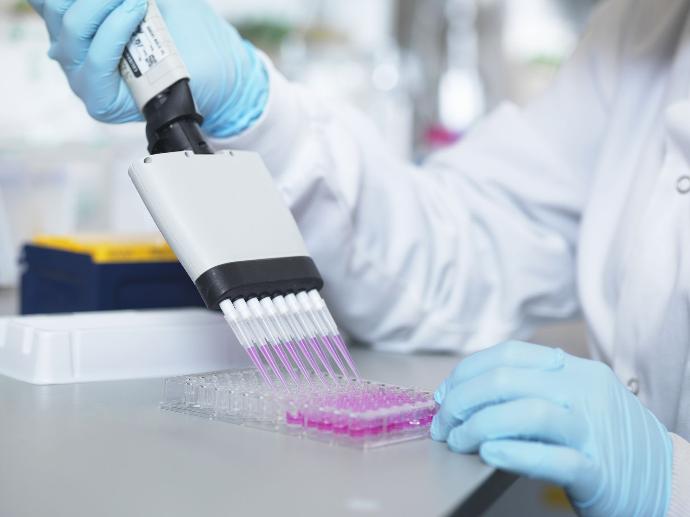The Three Types Of ELISA Results
Metaproteomics: Harnessing the Power of High Performance Mass.
Spectrometry to Identify the Suite of Proteins That Control Metabolic.
DATE 31th of october 2022
POSTED BY
kansasbio
COMMENTS
Since the 1970s, most radioimmunoassays have been replaced by ELISA assays or enzyme-linked immunosorbent assays. ELISA is a frequently used technique in labs that measures the concentration of antigens or antibodies found in a particular solution. ELISA is set apart from its counterparts, as it can provide quantitative results and because the separation of specific and non-specific interactions happens during serial binding to the polystyrene multi-well plate, or another solid surface.
ELISA Results
When the ELISA test is complete, it results in a finished product that is colored and will correlate to how much antigen or antibody is found in the original sample. ELISAs are a rapid and easy way to determine certain results and are often use as a first choice for research and diagnostic projects.
Currently, ELISAs have all but replaced radioimmunoassays. They can be used with variations and expanded formats to achieve different results and find different pieces of information. Multiple antigens or antibodies can be used per well and direct cell-based output can be determined.
Once completed, the ELISA assay test will produce three different types of results:
1. Quantitative
When determining quantitative results, the data received will be interpreted in comparison to a standard curve. This produces accurate calculations of the concentration of antigens in different samples.
2. Qualitative
Sometimes, the test results simply need to be a yes or a no. ELISA assays can give these answers, which tell the lab if a particular agent is present in a sample. With qualitative results, the sample is compared to a blank well that does not contain an antigen or an unrelated control antigen.
3. Semi-quantitative
With semi-quantitative results, relative levels of antigen in the assay samples are compared. This works because the intensity of the signal will be different with each antigen concentration.
The data from ELISA is usually graphed with an optical density log and log concentration. This produces a sigmoidal curve. The standard curve on the graph is found by using known concentrations of an antigen. This curve is then utilized to measure the unknown sample concentration and compare it to the linear part of the standard curve. The graphing is often created with curve fitting software.
ELISA

Omicsbio
Metaproteomes can provide diverse types of information about microbiomes, including composition, abundance dynamics, and the metabolism and physiology of individual members, including the host. Additionally, gene expression responses to changing conditions, localization of potential host–microbe interaction proteins within a host–microbe system, and the uptake of substrates labeled with heavy carbon or nitrogen can be determine

Host-associated microbial communities (microbiomes) play critical roles in human, animal, and plant health and development. However, interactions between the host, members of the microbiome, and invading pathogens are in most cases still poorly understood. Such interactions are multidimensional and can alter the taxonomic composition and/or the functional metabolic activities of the microbiome in response to disease or treatment conditions.
- After 2 days of antibiotic treatment, the mouse gut microbiome is altered and more susceptible to invasion by the pathogen Clostridioides difficile.
- Studies of these multidimensional interactions have been fueled by the ability to use high-throughput sequencing of phylogenetic marker genes to profile microbial community composition and shotgun metagenomics to profile functional potential .
- However, many protein-coding genes predicted from metagenomes are not necessarily expressed under a given condition, and thus, it is difficult to assess the activities and functional interactions in microbial communities based on DNA sequencing data alone.
- The physiological and pathological processes expressed in these communities under specific conditions are better reflected by the abundances of transcripts or proteins.
- In this Pearl, we provide a brief introduction to metaproteomics, which is a tool for the large-scale analysis of proteins in microbiomes that allows researchers to address a diversity of questions related to functions and interactions in microbiomes .
- The term “metaproteomics” was first used in 2004 for “the large-scale characterization of the entire protein complement of environmental microbiota at a given point in time” [8], and since then, a large array of metaproteomics approaches have been developed.
- Our objective in this Pearl is to highlight what we feel are 5 essential elements to be considered for a metaproteomics research campaign and to introduce nonexpert readers to the topic without going into too much technical detail.